Xbox One S vs PS4 Pro vs Nintendo Switch: which is better?
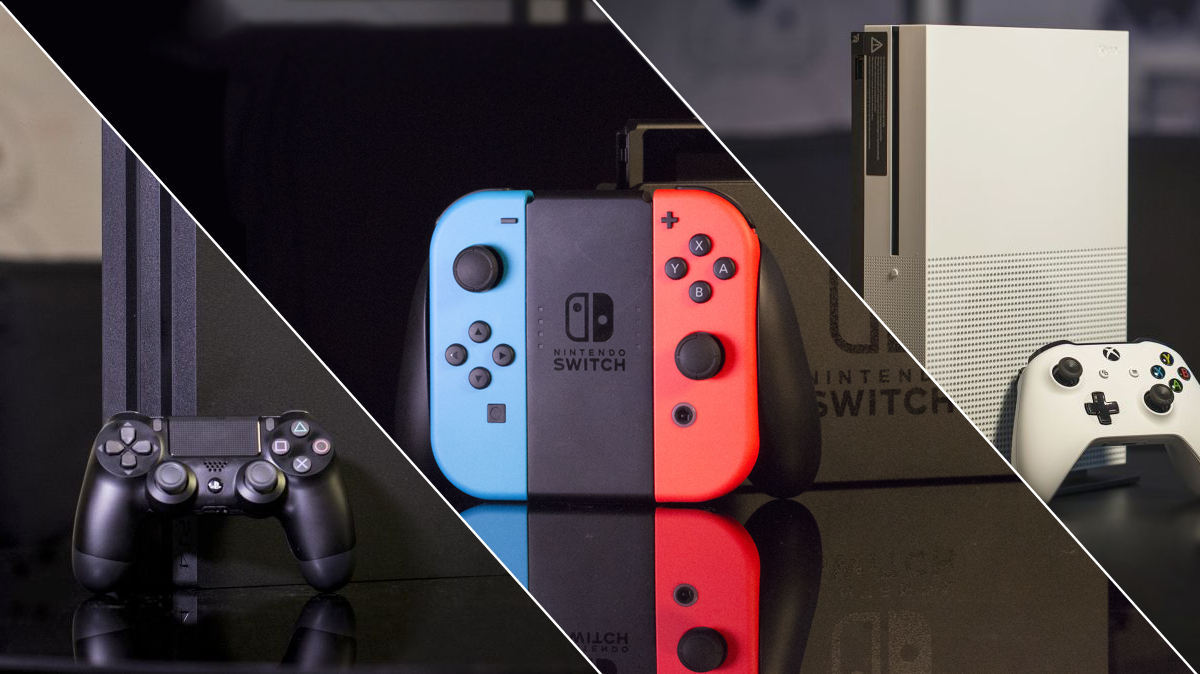
It's never been harder to choose the right gaming console for your home. With a resurgent Nintendo, Microsoft leading the pack on native 4K, and Sony offering the biggest library of games, competition is fierce – and each console maker brings their own flavour to the world of home gaming.
Until 2017, there were only two main home console competitors: the PS4 Pro and the Xbox One S.
Nintendo's Wii U console had struggled to gain any traction, and huge swathes of the industry where shocked when the Japanese company turned this around with the new Nintendo Switch: a hybrid between a home console and portable gaming machine that's sold millions of units at an unprecedented rate.
The Xbox One S also saw a new high-spec upgrade called the Xbox One X – which we have a separate comparison guide for below.
- Xbox One X vs Xbox One S vs Xbox One: compare the whole family
It would be easy to fall into the trap of assuming that all of these consoles do exactly the same things, but there are subtle – and some not so subtle – differences in what each of them offer and the type of gaming experience you'll get out of your purchase.
And with all three claiming to be consoles for your living room, and with the average living room only having so much space, it's worthwhile thinking through all the options.
Xbox One S vs PS4 Pro vs Nintendo Switch: graphics
- Xbox One S uses simplistic upscaling to generate 4K images.
- PS4 Pro renders at higher resolution and uses more intelligent upscaling to reach 4K.
- Nintendo Switch has least impressive graphics with no 4K support but has benefit of handheld mode.
When it comes to graphics all three of these consoles are sitting at different levels. While the Xbox One S and the PS4 Pro both support 4K output, they do so in different ways. Meanwhile the Nintendo Switch doesn’t support 4K output at all.
Sign up for breaking news, reviews, opinion, top tech deals, and more.
It seems unfair to call out the Nintendo Switch for having inferior graphics, though, as it's still capable of running some beautiful looking games (have you seen Breath of the Wild?) that largely benefit from Nintendo’s distinctive and attractive art style.
By virtue of being a Nintendo product and a hybrid console, the Switch was never going to match the PS4 Pro and Xbox One S in terms of graphical output. Partly because that's just not what Nintendo does and partly because its hybrid nature has naturally forced some performance compromises.
When it’s in its docked mode the Switch runs at a resolution of up to 1080p, though it does sometimes suffer from drops in its frame rate when running graphically intensive games like Breath of the Wild. When it’s in its handheld mode at a resolution of 720p, however, these hiccups are much less common.
You’ll still get good looking games on the Switch, but if you’re looking for the latest in high fidelity graphics we suggest that you turn your attention to the Xbox One S or the PS4 Pro.
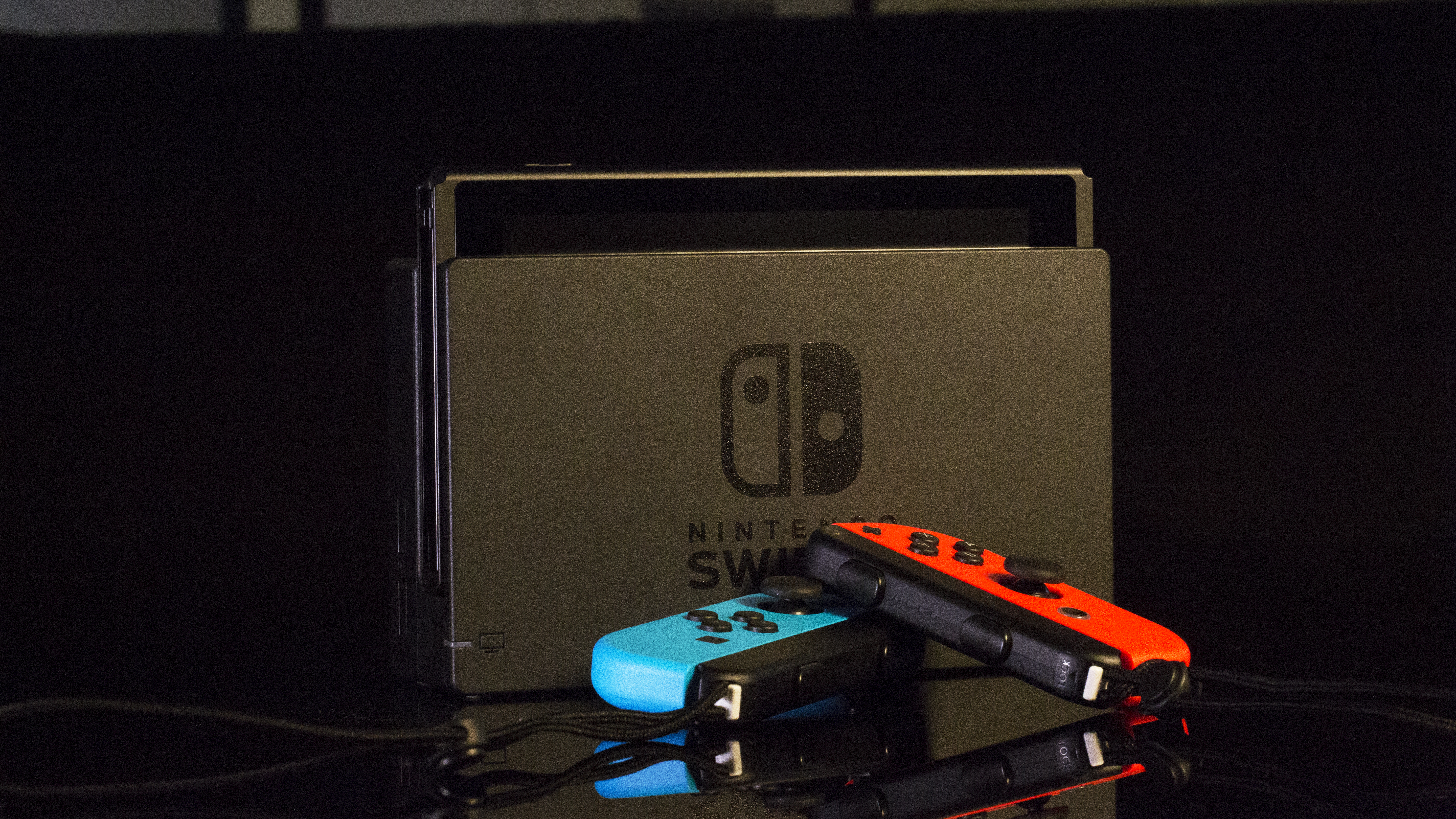
With the Xbox One S, its 4K output is achieved through a process called upscaling. This means the games it runs are rendered at 1080p and then stretched to fit a 4K screen.
As upscaling stretches each one of the game's pixels across four of your television's pixels to fit the 4K resolution, the images offered by the Xbox One S are not true 4K and you’ll find they’re less crisp and detailed than native 4K.
Though the PS4 Pro is capable of running games natively at 4K, like the Xbox One S it’s not always able to do so and will resort to the same upscaling method. It’s worth noting, though, that it’s slightly more clever in how it does this.
Each game on the PS4 Pro handles its upscaling slightly differently, but a general theme so far has been that games will render at a resolution that’s between Full HD and 4K and then use a more advanced upscaling method called ‘checkerboard rendering’ to fill its 4K pixels.
We won’t go too in-depth when talking about checkerboard rendering as that’s a one way ticket to a migraine but the key thing to know about it is that it means the images the PS4 Pro is able to display are much closer in terms of quality to native 4K content and much better than what the Xbox One S is able to achieve through its upscaling.
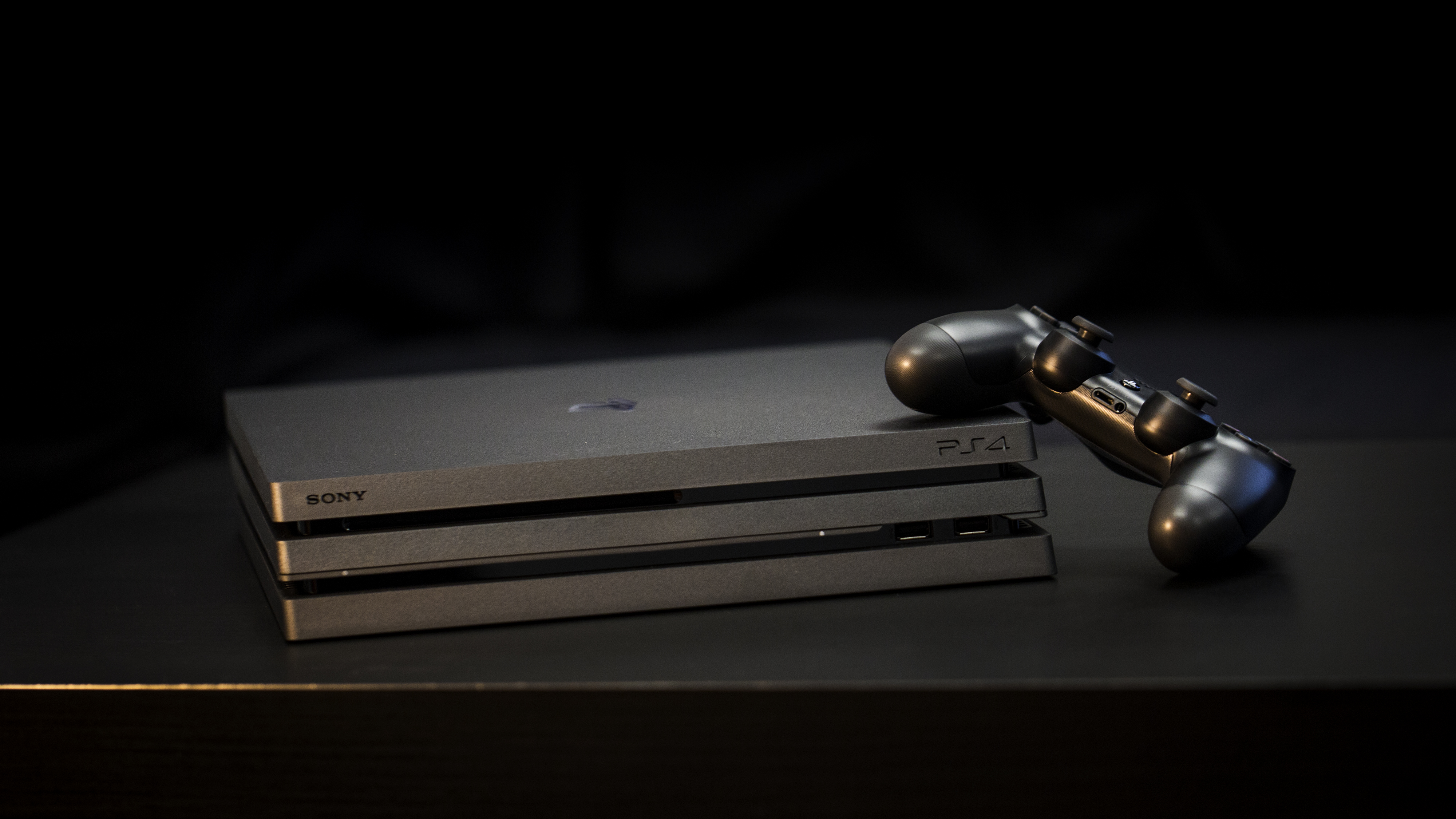
Initially the PS4 Pro had a big problem in that it relied on developers to create ‘Pro Patches’ for their games that would allow them to take advantage of the console’s more powerful hardware.
The latest firmware update for the console, however, has added a very convenient ‘Boost Mode’ which allows even games that haven’t received a Pro Patch to run more smoothly with more consistent frame rates on the Pro console. So the PS4 has a higher ceiling for visual performance than the other two – even if it can't match the true 4K / native 4K of the powerhouse Xbox One X.
Aside from 4K, HDR is the other big recent development in image technology, and the PS4 Pro and Xbox One S support it to varying degrees while the Nintendo Switch doesn’t at all.
With the Xbox One S the list is confined to games that have been specifically upgraded to support HDR and Ultra HD Blu-ray discs, whereas with the PS4 Pro most of the games that have a Pro mode should support it. The PS4 Pro, however, does not have a 4K Blu-ray player – but more on that in a little bit.
This means the amount of games that support HDR is currently much longer for the PS4 Pro than the Xbox One S.
Finally in terms of audio, the Xbox One S currently has the edge as it supports the latest and greatest audio technologies including Dolby Atmos. You'll need a premium audio setup to make the most of it (check out our guide to the best soundbars if you want to make the upgrade) but if being at the cutting edge of sound quality is important to you then the Xbox One S is the console to go for.

Xbox One S vs PS4 Pro vs Nintendo Switch: games
- All three have excellent exclusives.
- Nintendo Switch has less cross-platform titles than the PS4 Pro and Xbox One S.
Graphics are important, but they don’t really matter if a console doesn’t have games you want to play. All three of these consoles have great exclusives. However, while there’s a great deal of overlap between the Xbox One S and the PS4 Pro, this isn’t the case with the Nintendo Switch and that’s both a good thing and a bad thing for Nintendo’s console.
Xbox has some extremely attractive franchise exclusives which include Gears of War, Forza and Halo, which though not quite as good as it used to be is still a strong shooter title. It’s easy to think that the Xbox only really offers shooting and driving exclusives. However, it also has the games produced by Rare in its corner and the colorful and often nostalgic platformers that this studio develops are a great bonus for Microsoft’s console.
One of the biggest advantages the Xbox One S has over its rivals, however, is its backwards compatibility with Microsoft's previous console, the Xbox 360. It’s in a much better state than the PS4’s and Nintendo Switch’s and although you can’t yet play every 360 game Microsoft has made good progress.

That’s not to say the PlayStation 4 Pro doesn’t have some fantastic exclusives of its own. Boasting the Uncharted franchise, Horizon: Zero Dawn, The Last of Us and Bloodborne PlayStation can offer you some incredible gaming experiences that you won’t get anywhere else.
While it performs particularly strongly in the area of third person adventure titles, though, Sony’s console does fall behind when it comes to racing games and for those that enjoy them this could be a deal breaker.
It pulls itself back up again by being able to offer virtual reality experiences, though. While the PlayStation VR headset is something you'll have to purchase separately it's worth noting for anyone interested in burgeoning VR technology that PlayStation is the only console that's currently able to offer that.
By and large, though, most of this generation's biggest releases have been available on both consoles and going forward it seems likely that most major publishers intend to treat both platforms equally. It’s likely a timed exclusive or exclusive DLC will crop up now and again but outright exclusives have become much less common these days.

The Nintendo Switch is a different creature entirely when it comes to games. Though most of these games aren't out yet, Nintendo has some of the most attractive and popular first party franchises out there which include Pokemon, Mario, Animal Crossing and The Legend of Zelda.
You won’t find these games anywhere else and they’re big console sellers for Nintendo but at the same time the company has a complicated relationship with third party developers which greatly hinders it. It really depends on your priorities but it does mean that you could be sacrificing the latest and most innovative title for yet another barely altered Mario Kart game. (You can also run out of space pretty quickly without a Nintendo Switch SD card.)
Nintendo has promised that with the Switch we’ll see more third party titles which is promising and the list of third party and indie games that are coming to the console later in the year have our hopes high. It’s worth noting though that many of the best of them are titles like Skyrim and Stardew Valley that have been available elsewhere for a good while now.

Xbox One S vs PS4 Pro vs Nintendo Switch: films and media
- Xbox One S has an Ultra HD Blu-ray player
- Both Xbox and PlayStation stream 4K content, but you'll need a fast internet connection to do so
- Nintendo Switch has no native media player or video streaming apps but apps may come later
For many people the games console has now become the multimedia hub of the living room and while the PS4 Pro and Xbox One S fulfil this need in different ways, the Nintendo Switch doesn’t do it at all.
We might as well get it out of the way first – if you’re looking for a console that allows you to do more than play games do not buy a Nintendo Switch. Nintendo is adamant that its new console was designed first and foremost to play games which means no DVD player (Blu-ray or otherwise) and absolutely no video streaming apps.
Though Nintendo has said that video streaming apps such as Netflix, Hulu and Amazon Prime will come to the console ‘in time’ and negotiations are currently underway, there’s no indication of when this will actually happen and you could find yourself waiting a while.
The PlayStation 4 Pro and Xbox One S, however, are much more multimedia minded. The biggest difference between the two is that the Xbox One S has an Ultra HD Blu-ray player which allows it to play Ultra HD Blu-rays in all their uncompressed 4K HDR glory.
Ultra HD Blu-rays aren’t exactly coming out of retailers’ ears at the moment but when you have the option to pick up a film or TV Show in 4K it’s well worth doing and as time goes on it’s likely that the format will overtake standard Blu-rays in a similar manner to how Blu-ray has taken over DVD.

It’s worth noting, too, that the Xbox One S is currently one of the most affordable ways to get your hands on an Ultra HD Blu-ray player which may appeal to early adopters.
The PlayStation 4 Pro, on the other hand, while able to play standard DVDs and Blu-rays will not play Ultra HD Blu-rays.
As far as streaming content, both consoles are very similar as they’re both able to handle Netflix, Amazon Prime and Youtube in 4K.
Relying on streaming for your 4K content, however, does have its drawbacks. If you don’t have a good internet connection you could struggle to support a good quality 4K stream (Netflix, for example, recommends a connection speed of 25mbits or above). On the other hand, 4K Blu-ray discs are fairly expensive and not all that widely available so streaming does have its advantages.
However, while neither solution is perfect, the Xbox One S at the very least allows you to choose between them while the PS4 Pro makes your choice for you and the Nintendo Switch doesn’t factor at all.
Xbox One S vs PS4 Pro vs Nintendo Switch: portability
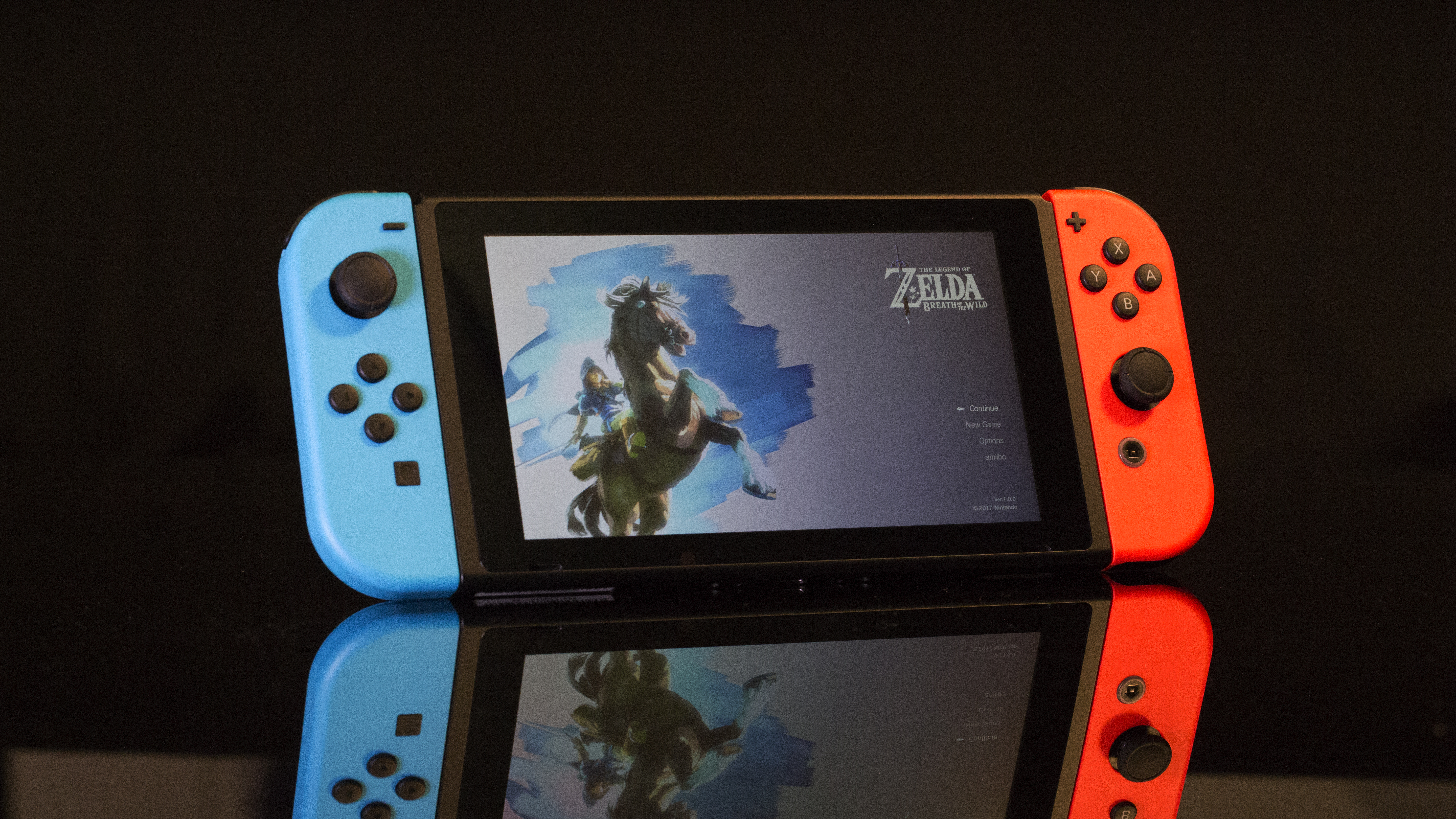
Naturally, this is going to be an area where the Nintendo Switch excels – portability is the console's unique selling point and it's been designed specifically to allow players to move smoothly between their home televisions and the portable tablet.
It does its job well, too. In its portable tablet form, the Nintendo Switch is a solid and premium-feeling handheld device and when you place it in its dock to connect to your home TV, it performs well.
The console does have to make compromises to achieve its multi-functional promises – it's larger than what we've come to expect from traditional handhelds and it's not capable of the same graphical performance as the other home consoles, but the transition between its two modes is seamless.
That's not to say you're tied to the room your console is in if you opt for the Xbox One S or PS4 Pro – both of these consoles have portable elements.
The Xbox One S has the Xbox Play Anywhere service. With this you can play your games on either your Xbox console or your Windows 10 PC. You only have to buy the digital copy of the game once on your Microsoft account for it to work on both systems and your saves, add-ons and achievements will move with you.
Not every Xbox game is available on the Play Anywhere service but it is growing. Obviously, a Windows 10 laptop or PC is nowhere near as portable as the Nintendo Switch's tablet, but it does offer some freedom and as the games are being played natively rather than being streamed, performance is consistent.

As far as the PS4 Pro is concerned, you also have the ability to play on both the console and on your PC using Sony's Remote Play service. With the Remote Play app, players are able to stream their PlayStation 4 games to their PS Vita, PC, Mac, PS TV device, or Sony Xperia device.
Though PlayStation Remote Play is compatible with more devices and gives access to more games than Xbox Play Anywhere, it has many limitations.
Firstly, as it's a streaming service it requires a high speed internet connection which isn't available to everyone in every location they may find themselves inclined to play. Most people are likely to find that they won't be able to get their most demanding games to play smoothly across their systems.
Xbox One S vs PS4 Pro vs Nintendo Switch Price
- Of the three, Xbox One S is the cheapest
We’d like to say money's no object but let’s face it: it totally is. If money was no object we’d just buy all three of the consoles.
Of the three consoles, the Xbox One S is the cheapest option. Right now you can pick it up the console on its own for around £220 ($260 / AU$350) though there are some fantastic bundles to be had with several games that come in at around £230 ($270 / AU$360) to £250 ($290 / AU$400)
In the middle sits the Nintendo Switch at £280 ($300 / AU$470) for the standlone console. At the moment the Nintendo Switch doesn’t have any particularly attractive bundles but we’re putting that down to how early it is in the console’s life cycle.
However, it’s worth noting that the Switch also has several costly sold-separately accessories to buy.
Arguably everything you need to play the Switch comes with it but quite quickly you’re likely to find yourself picking up a case and screen protector as well as a micro SD card to expand the console’s fairly small 32GB internal storage.
These separate purchases can all add up fairly quickly and to make the most of your Switch console at launch you could very well find yourself paying just as much as, if not more than, the cost of a PlayStation 4 Pro.
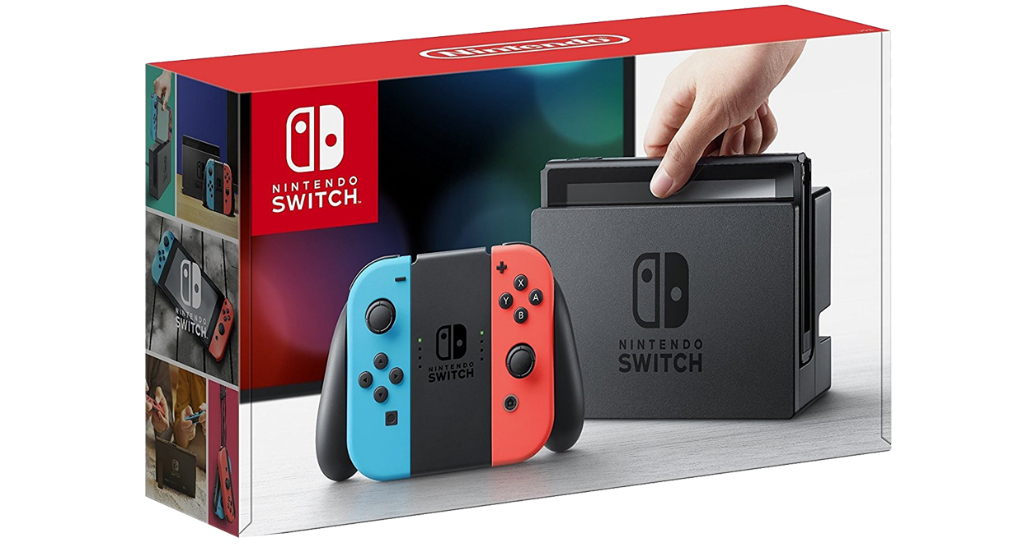
A neat segue – the PlayStation 4 Pro at the moment comes in at around £350 ($400/ AU $560). Usually this will get you the console, a controller and one or two games.
There are obviously periods where the deals for the consoles are better than others – Christmas and Boxing Day, for example, are usually excellent times to pick up a new console. That’s a while away, though, so if you want to see the best deals available right now, we have them here for you.
So which is better?
- The PS4 Pro's games look better
- The Xbox One S is the better-equipped media player
- The Nintendo Switch is the most versatile
- All three have great exclusive games but the Switch has less third-party support
Well, our tale is coming to its end and that means ideally we’ll be able to present you with a neatly tied up conclusion and tell you exactly how these three consoles have fared in their battle.
All three have their strengths and which one is the one for you is entirely down to your specific needs.
If you care first and foremost about 4K gaming, then the PS4 Pro has the edge right now. While the Xbox One S uses some pretty standard upscaling, the PS4 Pro uses some much more intelligent processes to make its games look very close to 4K.
The big advantage the Xbox One S has is its Ultra HD Blu-ray player. Many have argued that the future of home cinema is in streaming, and we’d be inclined to agree, but while the two major streaming providers Netflix and Amazon Prime Video already support 4K, you’ll need a pretty speedy internet connection to actually be able to see it.
As internet speeds improve this will be less of a problem in the future, but as it currently stands there are plenty of people out there who won’t be able to stream 4K content.

The Nintendo Switch, the newcomer to the fray, is by far the poorest performer when it comes to graphics and multimedia content. But, what it lacks in power it makes up for in convenience.
The Nintendo Switch is a console dedicated solely to gaming that you can easily play at home and on the go. Its hybridity means it’s able to offer a sense of freedom and fluidity of play that neither of its competitors can.
It’s also able to offer some of the most popular and enjoyable exclusives in gaming right now and if it lives up to its third party and video streaming promises it will become an even more worthy competitor.
That said, we can't help but feel that in the grand scheme of things that though the Nintendo Switch performs well on its own terms, when it's compared to the Xbox One S and the PS4 Pro it comes across a secondary home console choice rather than a primary one.
And there we have it: you've got one extremely affordable all-rounder, one high-powered 4K machine with VR support, and one lower powered but multi-use dedicated gaming console.
- Xbox Two, Xbox Scarlett: whatever it's called, here are our hopes and predictions for Microsoft's next console

Emma Boyle is TechRadar’s ex-Gaming Editor, and is now a content developer and freelance journalist. She has written for magazines and websites including T3, Stuff and The Independent. Emma currently works as a Content Developer in Edinburgh.